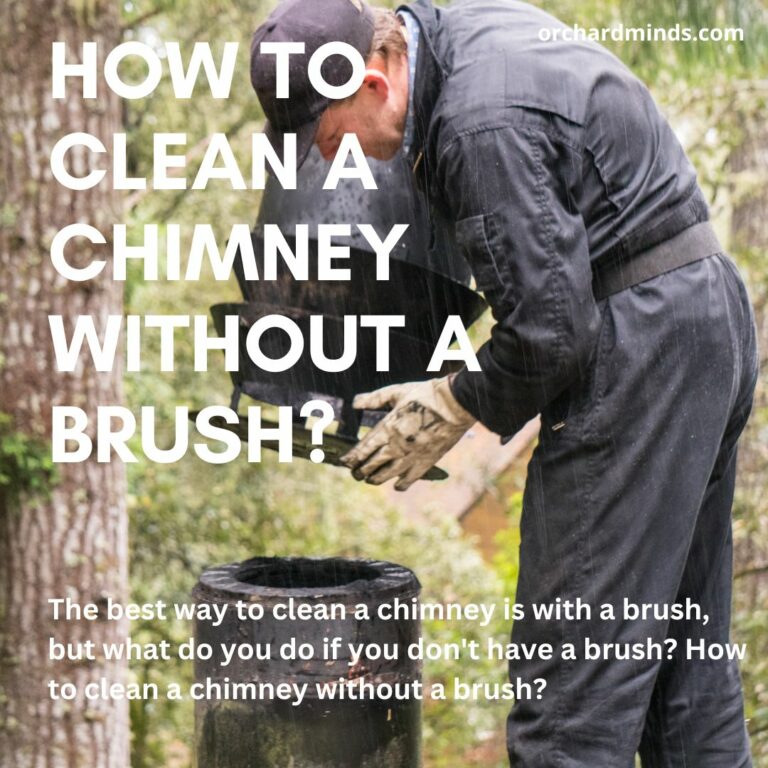Several common signs your chimney may need repair are cracked or damaged bricks, deteriorating mortar joints, and efflorescence (white, powdery residue) on the masonry suggest moisture infiltration. Rust and corrosion on metal components like the chimney cap or flue liner can weaken their structural integrity. Smoke backing up into your home, strange odours, or animals or debris in the chimney are also red flags. Promptly addressing these issues is crucial for maintaining the safety and functionality of your chimney system.
Efflorescence
Efflorescence is a white, powdery substance that can appear on the surface of your chimney’s masonry. It’s caused by water-soluble salts within the bricks drawn to the surface as water evaporates. While efflorescence isn’t necessarily harmful, it can indicate that your chimney absorbs water. This could be due to cracks or leaks in the chimney’s structure.
Foul or Smokey Smell
If you detect a foul or smokey odour in your home when using your fireplace or stove, it’s a clear sign that something is amiss with your chimney. This odour can result from creosote buildup, debris blockage, or a damaged flue liner. Ignoring these smells can lead to poor ventilation and potential health hazards, so addressing the issue promptly is essential.
Masonry Degradation
Over time, your chimney’s masonry can deteriorate due to exposure to the elements. Cracked or crumbling bricks and efflorescence (a white, powdery substance) are visible signs of this degradation. Moisture infiltration is often the culprit, and if left unattended, it can lead to more extensive damage, compromising both the aesthetic appeal and structural integrity of your chimney.
Crown Cracks
The chimney crown is a vital component that protects the chimney structure from moisture and debris. Cracks or damage to the crown can allow water to seep into the chimney, causing internal damage and hastening the deterioration process. Regular inspection and timely repair of crown cracks are essential to prevent costly structural issues.
Worn Mortar Joints
Mortar joints between the bricks or stones in your chimney can wear down over time. Harsh weather conditions and temperature fluctuations can accelerate this process, leading to gaps or missing mortar. These deteriorating joints weaken the chimney’s structure and create pathways for water infiltration. Repairing mortar joints is crucial to maintaining the chimney’s integrity.
Interior Wall Damage
Interior wall damage around your fireplace or chimney, such as discoloured paint, peeling wallpaper, or water stains, can indicate chimney issues. It suggests moisture seeps through the chimney structure and damages the surrounding walls. Ignoring these signs may lead to costly interior and chimney repairs. Addressing interior wall damage promptly can prevent further deterioration and maintain the aesthetics of your home.
Visible Rust
If you notice visible rust on any metal components of your chimney, such as the damper, flue liner, or chimney cap, it’s a sign of corrosion and deterioration. Rust weakens the structural integrity of these parts, which are crucial for proper chimney function. Addressing the rust promptly is essential to prevent further damage and ensure the safe operation of your chimney.
Animals or Debris
Chimneys without proper caps or covers are vulnerable to unwanted guests like birds, squirrels, or debris like leaves and twigs. These intrusions can block the flue, leading to ventilation problems and potential fire hazards.
It’s Been a Long Time
Like any other part of your home, chimneys require regular maintenance and inspection. If it has been a long time since your chimney was last checked or repaired, it’s a sign that it may be due for maintenance. Over the years, wear and tear can take a toll, and problems may have developed that you’re unaware of. Regular chimney inspections, even when there are no visible issues, are essential for ensuring the safety and functionality of your chimney system. Don’t wait until problems become apparent; schedule regular check-ups to catch issues early and prevent costly repairs.
FAQs about signs your chimney may need repair
What are the common signs that my chimney needs repair?
Look out for signs such as foul odours, visible rust, masonry degradation, interior wall damage, and poor chimney draft.
How can I tell if my chimney has deteriorating mortar joints?
Deteriorating mortar joints often appear as gaps or missing mortar between bricks or stones. You may notice the bricks becoming loose or crumbling.
Is efflorescence on my chimney a severe problem?
Efflorescence is not a significant issue, but it indicates that your chimney may absorb moisture. Addressing the source of moisture is crucial to prevent further damage.
Can I repair my chimney or hire a professional?
While homeowners can do some minor maintenance tasks, it’s often safer and more effective to hire a professional chimney technician for thorough inspections and repairs to ensure safety and compliance with local codes.
How frequently should I have my chimney inspected and cleaned?
Having your chimney inspected at least once a year and cleaned as needed is recommended. The frequency may vary based on usage and local regulations.
Are foul odours from my chimney dangerous?
Foul odours can indicate creosote buildup or blockages, hindering proper ventilation and posing safety hazards. Address these issues promptly to maintain a safe chimney.
What should I do if I see interior wall damage around my fireplace?
Interior wall damage could indicate moisture infiltration from the chimney. It’s essential to promptly address both the chimney issue and interior damage to prevent further deterioration.
Can I prevent chimney damage by using a chimney cap?
Yes, installing a chimney cap can help keep out moisture, debris, and animals, which can extend the life of your chimney and reduce the risk of damage.
How can I tell if my chimney has a damaged flue liner?
Smoke backing up into your home or visible cracks in the flue liner are indicators of a damaged or deteriorating flue liner.
What should I do if I suspect my chimney needs repair?
Contact a professional chimney sweep or technician to inspect and assess thoroughly. They can recommend the necessary repairs to ensure your chimney is safe and functional.
Regular chimney maintenance and inspection are essential for the safety and functionality of your fireplace or wood-burning stove. If you notice any common signs that your chimney may need repair, taking action promptly is crucial. Ignoring these issues can lead to more extensive damage, costlier repairs, and safety hazards. To ensure your chimney remains a reliable source of warmth and comfort, consult a professional sweep or mason for a thorough inspection and necessary repairs. Investing in your chimney’s health is an investment in the safety and well-being of your home.




Leave a Comment